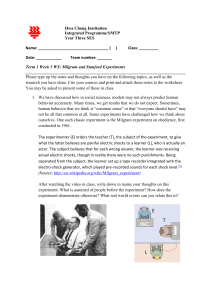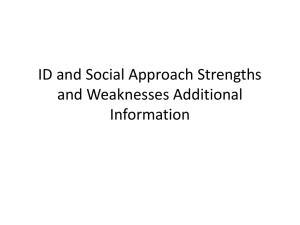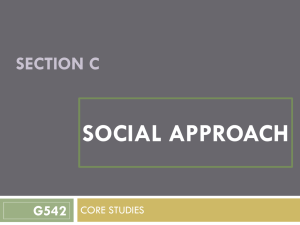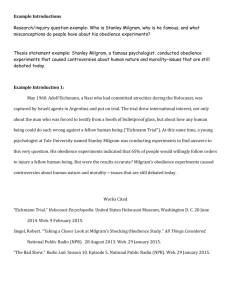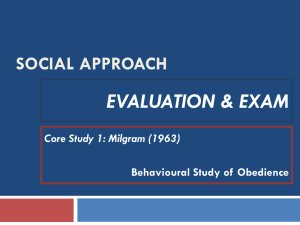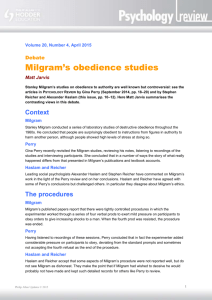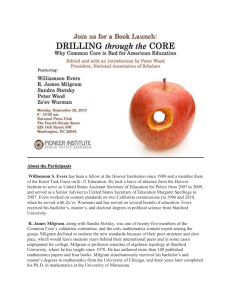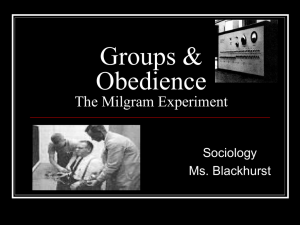The Social approach
advertisement
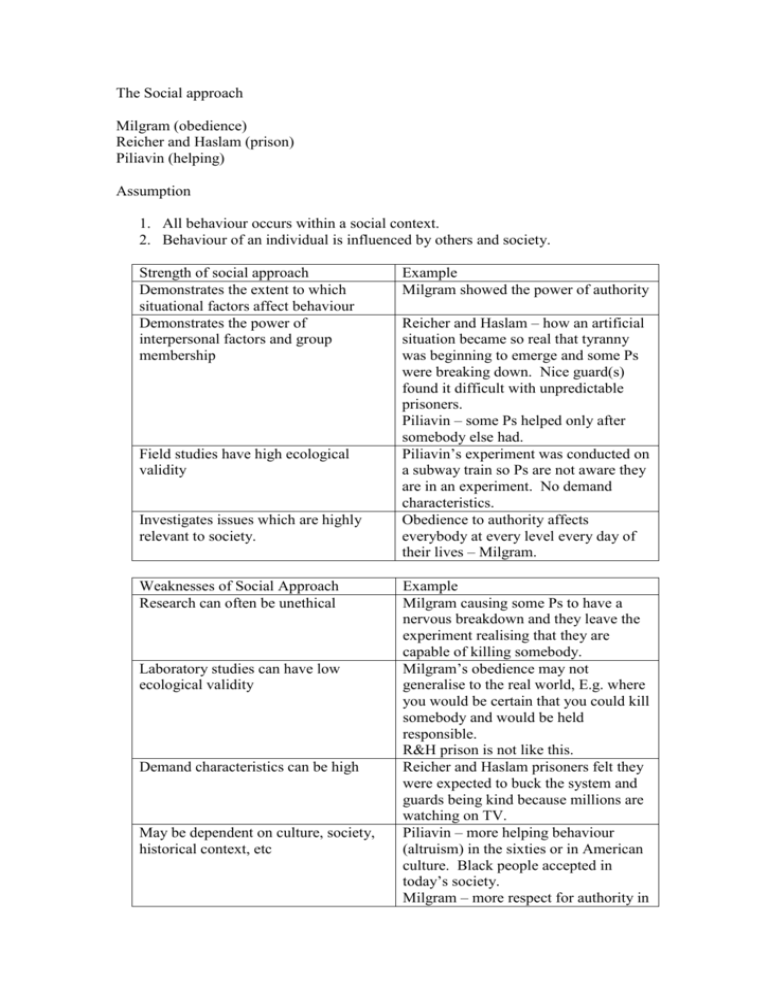
The Social approach Milgram (obedience) Reicher and Haslam (prison) Piliavin (helping) Assumption 1. All behaviour occurs within a social context. 2. Behaviour of an individual is influenced by others and society. Strength of social approach Demonstrates the extent to which situational factors affect behaviour Demonstrates the power of interpersonal factors and group membership Field studies have high ecological validity Investigates issues which are highly relevant to society. Weaknesses of Social Approach Research can often be unethical Laboratory studies can have low ecological validity Demand characteristics can be high May be dependent on culture, society, historical context, etc Example Milgram showed the power of authority Reicher and Haslam – how an artificial situation became so real that tyranny was beginning to emerge and some Ps were breaking down. Nice guard(s) found it difficult with unpredictable prisoners. Piliavin – some Ps helped only after somebody else had. Piliavin’s experiment was conducted on a subway train so Ps are not aware they are in an experiment. No demand characteristics. Obedience to authority affects everybody at every level every day of their lives – Milgram. Example Milgram causing some Ps to have a nervous breakdown and they leave the experiment realising that they are capable of killing somebody. Milgram’s obedience may not generalise to the real world, E.g. where you would be certain that you could kill somebody and would be held responsible. R&H prison is not like this. Reicher and Haslam prisoners felt they were expected to buck the system and guards being kind because millions are watching on TV. Piliavin – more helping behaviour (altruism) in the sixties or in American culture. Black people accepted in today’s society. Milgram – more respect for authority in the sixties. Studies Similarity Milgram and Reicher and Both artificial lab Haslam experiments. At some point participants get upset in both experiments. Participants were selfselecting samples replied to advert in the press. Milgram and Piliavin Piliavin and Reicher and Haslam Both took place in the Sixties when society may have had more respect for authority; more obedient and more helpful than it is now. Both have Ps influenced by somebody working for the experimenter. Both have ethical problems. Both looked at helping behaviour – Piliavin helping a collapsed stranger and R&H demonstrated the extent of helping within a group in order to achieve a common goal. Both stick to the observational ethical guidelines; Piliavin observes in a public place and R&H get permission and is checked by ethics team. Both looked at people in groups. Difference Milgram studied individuals, one participant at a time whereas R&H studied group processes. Milgram is unethical and R&H tries to be ethical. Milgram Ps do not know what is going on whereas R&H are fully informed. Milgram used a laboratory environment and Piliavin used a reallife setting, so ecological validity may be higher in Piliavin’s research Piliavin went into the real world to conduct a field experiment where participants did not know they were taking part in an experiment. R&H used an artificial setting where Ps knew they were being watched. (also Demand Characteristics – low in Piliavin, high in R&H). Both used observations but R&H backed these up with self-report and physiological tests, whereas Piliavin did not. Describe one similarity and one difference between any social approach studies. (6). 3 marks description of similarity is accurate and has elaboration. Understanding is good. 3 marks description of difference is accurate and has elaboration. Understanding is good.
